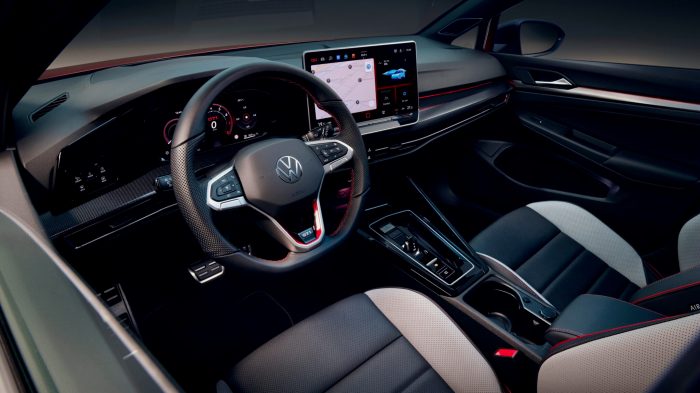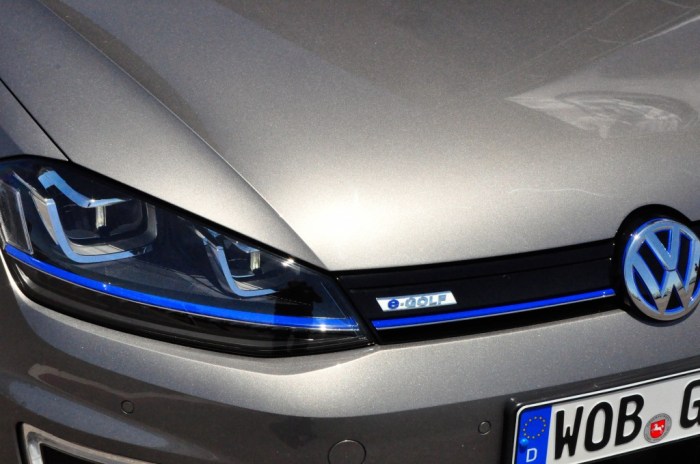The automotive landscape is rapidly shifting towards electric vehicles (EVs), and the Volkswagen e-Golf, while no longer in production, remains a relevant example of the environmental advantages of choosing electric over gasoline-powered cars. Even in 2025, understanding its impact on the environment provides valuable context for considering current EV options and the broader transition to sustainable transportation.
Reduced Greenhouse Gas Emissions: The Core Benefit
The most significant environmental benefit of driving an e-Golf, or any EV, is the drastic reduction in greenhouse gas (GHG) emissions. Unlike gasoline cars that release harmful pollutants like carbon dioxide (CO2), carbon monoxide (CO), and nitrogen oxides (NOx) directly into the atmosphere during combustion, the e-Golf’s emissions are significantly lower throughout its lifecycle. While electricity generation itself can contribute to GHG emissions, the overall carbon footprint of an EV is considerably smaller, particularly when charged using renewable energy sources like solar or wind power.

Source: com.au
Lifecycle Assessment: From Manufacturing to Disposal
A comprehensive assessment of an e-Golf’s environmental impact necessitates a lifecycle analysis, considering emissions from battery production, vehicle manufacturing, operation, and end-of-life disposal. While battery production does involve some GHG emissions, these are offset by the significantly lower emissions during the vehicle’s operational phase. Responsible recycling programs for EV batteries are also crucial in minimizing the overall environmental footprint. Studies consistently demonstrate that EVs, including the e-Golf, have a lower carbon footprint compared to their gasoline counterparts, even accounting for these lifecycle factors.
EPA’s data on greenhouse gas emissions provides further insight.

Source: thedieseldriver.com
Improved Air Quality in Urban Environments
The absence of tailpipe emissions from the e-Golf translates directly into improved air quality, especially in densely populated urban areas. Gasoline vehicles contribute significantly to smog and respiratory illnesses due to the release of NOx and particulate matter. The e-Golf, by emitting only minimal amounts of pollutants during operation, contributes to a healthier breathing environment for city dwellers.
This is particularly important for vulnerable populations like children and the elderly who are more susceptible to air pollution-related health problems. WHO’s facts on air quality and health highlights the importance of reducing air pollution.
Reduced Noise Pollution
Electric vehicles are significantly quieter than gasoline-powered cars. The near-silent operation of the e-Golf contributes to reduced noise pollution, especially in urban areas where noise levels are already high. This quieter operation enhances the overall quality of life for residents and contributes to a more peaceful environment. Reduced noise pollution can also positively impact wildlife and ecosystems surrounding urban centers.
Energy Independence and Security
While the e-Golf relies on electricity, transitioning to EVs can contribute to greater energy independence and security, particularly if the electricity grid incorporates a higher proportion of renewable energy sources. Reducing reliance on imported fossil fuels improves national energy security and reduces vulnerability to global oil price fluctuations.
Technological Advancements and Future Implications
The e-Golf, while a previous model, showcases the advancements in electric vehicle technology. Its successor models and other EVs on the market today benefit from improved battery technology, increased range, faster charging times, and enhanced performance. These advancements continue to enhance the environmental benefits of electric vehicles, making them a more attractive and practical option for a wider range of drivers.
Addressing Concerns: Battery Production and Disposal
One common concern regarding EVs is the environmental impact of battery production and disposal. While the mining and processing of materials for EV batteries do have an environmental footprint, advancements in battery technology and recycling processes are continuously minimizing this impact. Responsible battery recycling programs are crucial for recovering valuable materials and preventing environmental contamination. The European Union, for instance, has implemented regulations to promote responsible battery management.
EU’s policy on batteries details their approach.
The e-Golf’s Legacy: Paving the Way for Sustainable Mobility
Although no longer in production, the VW e-Golf played a significant role in popularizing electric vehicles and demonstrating their environmental benefits. Its legacy continues to inspire the development of more efficient and sustainable electric vehicles, contributing to a cleaner and healthier future for transportation.

Source: topspeedimages.com
Frequently Asked Questions (FAQs)
- Q: Is it cheaper to run an e-Golf than a gasoline car? A: Generally, yes. Electricity is typically cheaper than gasoline, resulting in lower running costs. However, the initial purchase price of an EV might be higher.
- Q: How long does it take to charge an e-Golf? A: Charging time varies depending on the charger type. Public fast chargers can significantly reduce charging time, while home charging takes longer but is more convenient.
- Q: What is the range of an e-Golf? A: The range of an e-Golf depends on several factors, including driving style, weather conditions, and battery condition. However, it offers a sufficient range for everyday commuting and shorter trips.
- Q: What happens to the batteries at the end of the e-Golf’s life? A: Responsible recycling programs are crucial for recovering valuable materials from EV batteries and preventing environmental damage. Many manufacturers and governments are investing in battery recycling infrastructure.
- Q: Are there government incentives for buying EVs? A: Many governments offer incentives such as tax credits or rebates to encourage the adoption of electric vehicles.
Call to Action
Choosing an electric vehicle like the (now discontinued) e-Golf, or its modern equivalents, is a significant step towards a more sustainable future. Research current EV options available in your market and consider the long-term environmental and economic benefits of making the switch to electric mobility. Let’s collectively contribute to a cleaner and greener transportation system.
Popular Questions
What is the range of a VW e-Golf in 2025?
The range varies depending on the specific model and battery capacity, but generally, expect a range of approximately 100-150 miles on a single charge.
How long does it take to charge a VW e-Golf?
Charging times depend on the charging infrastructure. Level 2 chargers will typically take several hours, while DC fast charging can significantly reduce charging time to under an hour.
What happens to the e-Golf’s battery at the end of its life?
VW and other manufacturers are developing robust battery recycling programs to recover valuable materials and minimize environmental impact.
Are there government incentives for buying an electric vehicle like the e-Golf?
Many governments offer tax credits, rebates, and other incentives to encourage the adoption of electric vehicles. Check your local and national programs for details.
